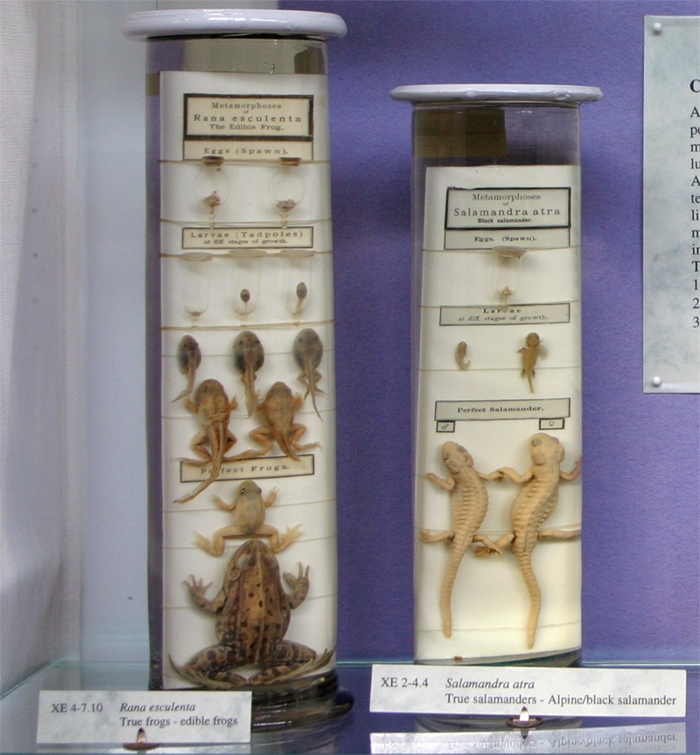
REPRODUCTION AND METAMORPHOSIS
The reproductive strategies of amphibians are very diverse: fertilization can be external or internal. Most species lay eggs but some are viviparous, the females producing live young. Adults of some species lay their eggs in water and leave the larvae to fend for themselves; the adults of a number of species look after their young.
Metamorphosis enables aquatic juveniles to transform into adults. This process is under hormonal control. Increased amounts of thyroxine, or a change in sensitivity of tissues to this hormone, in the larva trigger the processes that lead to sexual maturity. Metamorphosis is most dramatic in frogs and toads. Some of the species of salamanders shown here do not metamorphose completely and the sexually mature adults retain larval features such as external gills. This phenomenon is called paedomorphosis or neoteny.

Left : Metamorphosis of Rana esculenta, the Edible Frog, showing stages in the development from eggs, through larval tadpoles to terrestrial adults. Frogs lay eggs which hatch into herbivorous tadpoles with large tails, no apparent fore-limbs, tiny hind limbs and external gills. When tadpoles metamorphose, they lose their external gills, their fore-limbs appear, their hind limbs enlarge and their tails are resorbed. Their long coiled intestines adapted for a vegetarian diet in water shorten dramatically to adapt to a carnivorous diet on land. The larvae emerge on land as tiny froglets which take several years to reach sexual maturity.
Right: Metamorphosis of Salamandra atra, the Black or Alpine Salamander, showing metamorphosis from eggs through larval juveniles to adults. Newts and salamanders lay eggs which hatch into larvae that look like miniature adults with external gills. Metamorphosis involves loss of gills and lateral line organs, internal changes in skeleton and muscles, resorption of tail fins (but not the tail), differentiation of eyelids, changes in thickness and permeability of skin to water.






